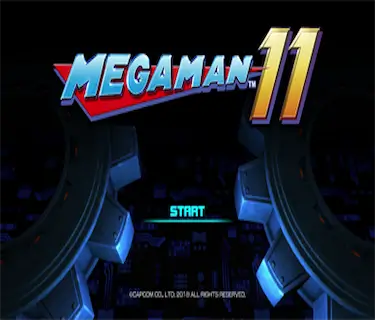I first discovered Mega Man 2 when I used to rent it from our local video store. That weekend ritual sparked a lifelong love for the Blue Bomber.
For this list, I chose ten titles based on gameplay innovation, fan reception, historical impact, and the signature mechanics that made each entry stand out.
The Table of Contents
1. Mega Man 2 (1988 – NES)
Released in 1988 for the Nintendo Entertainment System, Mega Man 2 refined the blueprint with tighter controls, eight memorable Robot Masters, and the now-iconic password system.
Its difficulty curve, smart stage design, and unforgettable soundtrack cemented it as the series’ gold standard. The E-Tank added a strategic safety valve during boss encounters.  Bosses like Metal Man and Quick Man demand distinct routes and weapon choices that reward experimentation.
Bosses like Metal Man and Quick Man demand distinct routes and weapon choices that reward experimentation.
It’s the template everyone copied: crisp jump arcs, readable enemy patterns, and stages that teach by pushing you just past your comfort zone. The weapon-weakness loop feels great to route—Metal Blade shreds, Air Shooter deletes aerial threats, and Crash Bombs turn Wily’s fortress into Swiss cheese.
Momentum builds perfectly: eight Robot Masters → Wily stages → multi-phase late-game gauntlets. Even decades later, the rhythm of “learn, fail, adapt, overcome” is as tight as action-platformers get.
Key Features
- E-Tank for on-demand health recovery
- Standout Robot Masters (Metal Man, Quick Man)
- Legendary soundtrack by Takashi Tateishi
2. Mega Man 3 (1990 – NES)
 Mega Man 3 introduced the slide and Rush, reshaping movement and boss tactics. The debut of Proto Man added intrigue and character depth across the series.
Mega Man 3 introduced the slide and Rush, reshaping movement and boss tactics. The debut of Proto Man added intrigue and character depth across the series.
Slide changes everything—squeezing under fire, canceling tells, and baiting bosses into whiffs. Rush Coil/Jet open up expressive routes and secrets, making stages feel less linear without losing clarity.
The infamous Doc Robot revisits reimagined Mega Man 2 boss patterns—a clever remix that stretches your toolkit. Proto Man’s cryptic pop-ins add a hint of myth to the series, setting up future character arcs.
Key Features
- Proto Man’s first appearance
- Slide mechanic changes traversal flow
- Diverse, reactive level design
3. Mega Man X (1993 – SNES)
On the SNES, Mega Man X modernized the series with wall-climb and dash, enabling expressive routing and speed. The darker tone and world-building pushed the franchise forward.

X is about movement expression: wall kicks into dash chains, height into speed, speed into style. Stages feel alive—Storm Eagle’s airship, Spark Mandrill’s power outages if you beat Launch Octopus first—your order reshapes the world.
Dr. Light’s capsules (armor, dash, buster upgrades) and heart/sub tanks add a satisfying RPG-lite growth curve. It’s a perfect on-ramp for newcomers and a playground for veterans chasing cleaner lines and faster clears.
Key Features
- Movement that redefined platforming feel
- Richer story and tone
- SNES-era audio/visuals that still sing
4. Mega Man Legends (1997 – PlayStation)
 The series’ bold 3D pivot blended action-adventure, exploration, and questing. As GameSpot noted, its world and characters proved Mega Man could thrive beyond side-scrolling.
The series’ bold 3D pivot blended action-adventure, exploration, and questing. As GameSpot noted, its world and characters proved Mega Man could thrive beyond side-scrolling.
Kattelox Island is cozy and explorable, packed with dungeons, upgrades, and NPCs worth talking to. Lock-on aiming and modular arm upgrades shift the series toward adventure pacing without ditching action DNA.
The Bonne family are lovable rogues, the humor actually lands, and side-quests feed directly into your build. It’s Mega Man with heart—less score-chasing, more world-savoring.
Key Features
- First main 3D entry
- NPCs, dungeons, and explorable hubs
- Light RPG-style progression
5. Mega Man Zero (2002 – Game Boy Advance)
 On GBA, Mega Man Zero puts Zero in the lead, emphasizing a sharper difficulty curve, skill-forward combat, and a somber story about identity and survival.
On GBA, Mega Man Zero puts Zero in the lead, emphasizing a sharper difficulty curve, skill-forward combat, and a somber story about identity and survival.
Precision is the point: saber hitboxes, dash-cancel windows, and tight boss cycles reward mastery. Missions are denser and more dangerous than classic routes, with ranks that reflect execution, not grinding.
Cyber-Elves add flexible utility—heals, buffs, shortcuts—at the cost of rank, letting you tune difficulty to your taste. The tone leans somber without getting grimdark, giving the victories real weight.
Key Features
- Zero as protagonist with unique arsenal
- Precision platforming and boss design
- Darker narrative stakes
6. Mega Man Battle Network (2001 – Game Boy Advance)
 The tactical-RPG pivot merges grid combat, customizable battle chips, and a cybercrime story about NetNavis. Strategy, positioning, and build variety make it immediately distinct from the platformers.
The tactical-RPG pivot merges grid combat, customizable battle chips, and a cybercrime story about NetNavis. Strategy, positioning, and build variety make it immediately distinct from the platformers.
Battles are real-time chess on a 3×6 grid: dodge on blue panels, pressure across the red, and chain chip codes for big burst. Builds can skew aggressive, control-heavy, or toolbox reactive—there’s always a new deck to try.
The rhythm between Lan’s school life and Net battlings gives the story a Saturday-morning pace, while optional bosses demand serious system knowledge. It’s the most “tinker-friendly” Mega Man.
Key Features
- Tactical 3×6 grid battles
- Chip loadouts and deck-like builds
- Cyber-themed narrative
7. Mega Man 9 (2008 – Wii/PS3/360)
According to IGN’s 2008 review, this is a triumphant return to 8-bit aesthetics and fair-but-firm challenge—new Robot Masters and clever stage design deliver authentic nostalgia with modern polish. (If you love modifiers, my NES Game Genie picks are a fun side trip.) 
Intentionally lean—no slide, no charge shot—so fundamentals shine: footsies, timing, and clean jump precision. Stages teach single ideas extremely well (disappearing blocks, trap platforms, enemy funnels) then escalate them fairly.
As IGN notes, it nails the feel of the 8-bit era while avoiding “gotcha” cheap shots. Time trials and challenges extend the life for score-chasers and speedrunners.
Key Features
- Authentic 8-bit presentation
- Fresh Robot Masters and stage ideas
- Classic precision platforming
8. Mega Man 11 (2018 – PS4/Xbox One/Switch/PC)
 A modern refresh with crisp visuals and the Double Gear system, letting players briefly slow time or boost power. It balances classic level design with new strategic layers, appealing to veterans and newcomers alike.
A modern refresh with crisp visuals and the Double Gear system, letting players briefly slow time or boost power. It balances classic level design with new strategic layers, appealing to veterans and newcomers alike.
The Double Gear system isn’t a gimmick—it’s a tempo knob. Speed Gear creates clutch slow-mo routes through bullet webs; Power Gear redefines damage thresholds and breakpoints on bosses.
Levels are built around gear timing—use it greedily and you’ll overheat; pace it and you’ll shave minutes. It’s classic jump-and-shoot with modern risk-reward baked in.
Key Features
- Modern graphics and sound
- Double Gear system (speed/power)
- Classic feel with contemporary pacing
9. Mega Man ZX (2006 – Nintendo DS)
 Building on the Zero sub-series, open-world exploration and Biometal transformations create a Metroidvania-style loop that rewards curiosity, routing, and mastery of multiple forms. See also: my DS authenticity guide for collectibles (spotting fake Pokémon DS games).
Building on the Zero sub-series, open-world exploration and Biometal transformations create a Metroidvania-style loop that rewards curiosity, routing, and mastery of multiple forms. See also: my DS authenticity guide for collectibles (spotting fake Pokémon DS games).
Vent/Aile’s Biometals swap movesets on the fly—mobility forms for traversal, bruiser forms for boss melts, precision forms for tech skips. The interconnected map scratches the Metroidvania itch without drowning you in backtracking.
Side-missions and hidden rooms drip-feed upgrades, and bosses feel like puzzles you solve with the right form routing. It’s the “explorer’s” Mega Man.
Key Features
- Open, interconnected map
- Biometal form swapping
- Metroidvania progression
10. Mega Man Powered Up (2006 – PSP)
 A charming remake of the original, featuring updated visuals, voice acting, two new Robot Masters, and a robust level editor for creating and sharing stages—community creativity supercharged replayability. (If you collect PSP, here’s where to sell PSP games.)
A charming remake of the original, featuring updated visuals, voice acting, two new Robot Masters, and a robust level editor for creating and sharing stages—community creativity supercharged replayability. (If you collect PSP, here’s where to sell PSP games.)
Chibi look, serious chops: two new Robot Masters, “Old Style” vs. “New Style” stage layouts, and surprisingly sharp boss patterns. Playing as Robot Masters recontextualizes stages—abilities flip what’s possible in clever ways.
The level editor is a time sink in the best way—bite-size challenges, themed gauntlets, and community-minded replayability. It’s both museum and sandbox for the original formula.
Key Features
- Reimagined classic with new content
- Level editor and sharing
- Enhanced presentation (VO, visuals)
Quick Summary Table
If You Only Remember 3 Things
- Mega Man evolves by innovating—movement, mechanics, and tone shift across eras.
- From 8-bit to 3D and tactical RPGs, the series adapts without losing its core charm.
- There’s an ideal entry point for everyone—pick by platform, pace, or preferred mechanics.
The Retro Wrap Up:
The Mega Man series spans genres and generations while staying unmistakably Mega Man. Whether you’re revisiting 8-bit precision or trying the tactical grid of Battle Network, these ten picks represent the franchise’s creativity, staying power, and sheer fun.
Frequently Asked Questions
What are the best Mega Man games of all time?
- Fan favorites include Mega Man 2, Mega Man 3, Mega Man X, Mega Man Legends, and Mega Man 9 for their tight gameplay and memorable design.
What are the best Mega Man X games?
- Mega Man X, X2, and X4 are often ranked highest for their stage design, upgrades, and soundtrack.
What are the best Mega Man Battle Network games?
- Battle Network 3, 5, and Battle Network 6 are standouts thanks to their deep chip systems and engaging storylines.
What is the best way to play all Mega Man games?
- The Mega Man Legacy Collection and Mega Man X Legacy Collection offer official, accessible ways to play most games in the series, including many from this list.
What are the best classic Mega Man games?
- Mega Man 2, Mega Man 3, and Mega Man 9 are praised as the most refined entries in the classic series.



